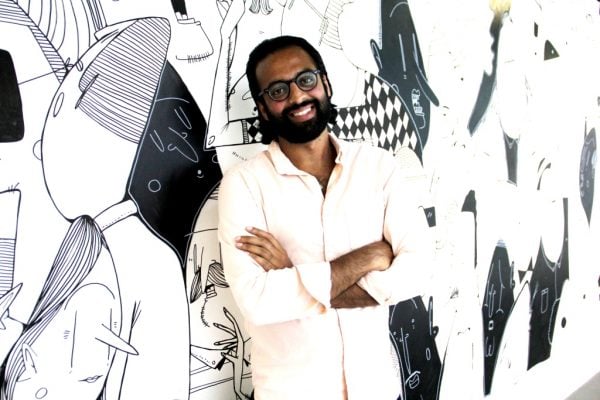
Earlier this year, Gucci unveiled its creative hub, the Artlab, in Florence. Described by CEO Marco Bizzarri as a‘testament to creativity, innovation and technology’, its ambition is to allow Gucci to strengthen its supply chain through new processes and tech, whilst fostering the optimal environment for creative director Alessandro Michele to quite simply do his thing. It’s quite a departure for a fashion brand, which has long relied on craftsmanship and artisans to create, to now turn to tech to do the same. More than this, there is a lesson for all of us.
Like most luxury brands, Gucci needs to appeal to various audiences, old and new, classic and modern, offline and online.
Stepping out of a comfort zone to speak to new audiences in a new language isn’t without pain points.
Embracing tech when everything was about dexterous hands is equally challenging. Nevertheless, Gucci has transitioned into the digital space so well that L2 Research, a data-driven analysis specialist, named it the best performing digital fashion brand in both 2016 and 2017. According to the consultancy, Gucci’s “digital competence” places it ahead of other digitally savvy competitors, including Michael Kors, Fendi, Burberry and Louis Vuitton.
It’s as if the left brain and the right brain were reconciled when, in our popular culture, they tend to be opposed. What the Gucci example demonstrates is that in business, logical and creative thinking not only coexist but thrive together. It also happens to be true with our biology. The advertising industry would do well to remember this.
Here’s the thing: It feels like the future of advertising is all about data and tech. While there’s no denying that data produces insights that can be injected into the creative process, the end result is that rational, logical and analytical thinking is preferred, even prioritised, over a more innovative, creative, even intuitive one.
Optimisation is a key rationale behind this as it is seen as a shortcut to performance, effectiveness and profitability.
With AI, we talk about automation and predictability. Some even speak of hacking the human spirit.
How far are we going to go before we de-humanise advertising and brand communications fully?
This search for the optimal solution also risks closing the door to alternative approaches and thoughts because it’s based on what we know and have. But what if the biggest pot of gold was at the end of a rainbow yet to form or be seen? What if it can only be found by the person with rose-tinted glasses?
This homogenisation of opinion can also apply to team composition, working processes and ultimately output. What’s more, it intensifies the competition between entities that end up colliding because they propose an increasingly similar service offering to the same type of clients.
Will success be found following everybody down the same path, or will it be taking the road less travelled? Will you listen to your head or your heart to make that decision? Chances are data will play a part, but what about your gut feeling? Data and tech have provided safety, a life-jacket in the turbulence of disruption and change, to marketers in dire need of direction and certainty. This sense of security will eventually wear off. In advancing only through tech, it feels like we are treading into sterile ground.
Hence why we need to inject bravery back into the process. On the scale of change, we need to operate at the ‘transformation’ end of the spectrum, rather than the ‘tweak’ one.
Innovation and new ways of working are about thinking and behaving differently. It’s what gets you noticed. Putting too much emphasis into data and tech, A/B testing and optimising everything is basically a way to abdicate true decision-making. Commercial success has, at its root, creativity rather than safety, as scientific evidence shows.
We’ve become hypnotised by technology and, while it does bring a lot of value, abuse can be noxious. Marketing professionals need to become as deft and versed in new thinking as they are with data, value it just as much and apply a similar rigour and energy to achieve greatness. Even the analysis of data would benefit from the range of perspectives that comes from diverse teams with different backgrounds, skills and experiences.
We’ve made serious headway in working with data and tech. It’s now time to turn our attention back to ideas and creativity, driven by the ambition to answer consumer needs meaningfully while stimulating growth. To embrace creativity, clients and agencies will have to accept both risk and failure, and manage the steep learning curve that comes with alternative thinking, not taking incremental steps.
Wherever this eventually takes us, we’ll certainly explore new models,learn new skills, break a few things and achieve some magnificent feats along the way.
Gucci used a relevant quote in its AW17 collection: “What are we going to do with all this future?” At this stage we don’t know exactly, but the work begins today.
The creative vs tech conundrum is not about man vs machine. It is an opportunity to be brave, to take risks and to start again.










